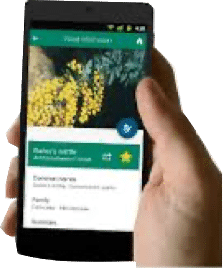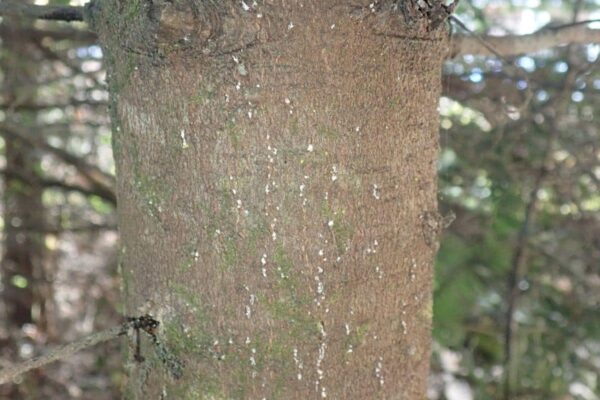Balsam woolly adelgid
About This Species
The Balsam wooly adelgid is a small, sap-sucking wingless insect native to Europe that feeds on true Firs (Abies spp.). Balsam wooly adelgids damage trees by feeding. As they drink sap through their straw-like mouthparts, they inject saliva which is toxic to the tree. The saliva causes swelling around the feeding area, which compresses the wood and kills terminal buds. This swelling, called tree gout, will hinder growth, cause needles to yellow and drop, and may kill the crown of a tree. It also reduces wood quality. By killing needles and preventing new growth, adelgid feeding can kill a tree within a few years. Balsam woolly adelgid is designated as a Management species by the BC Provincial Priority Invasive Species List.
How to Identify
Adult Balsam wooly adelgids resemble aphids. They are around 1 mm across and grey, with a white waxy sheen.
These insects have between 2-4 generations per year. Female adelgids lay up to 200 brown eggs under white woolly tufts of wax along tree trunks and branches. In a heavily infested tree, the trunk may be covered with these tufts. The eggs hatch into an immature ‘crawler’ which disperses throughout the tree and to new host trees. These crawlers are about 1/3 the size of an adult Balsam wooly adelgid, with an amber coloured oval body.

Take Action
Prevention is the best approach.
-
If you need advice about invasive species on your property or you are concerned about reported invasives in your local area, contact your local government or regional invasive species organization.
prevention tips
Do not move fir trees between regions. Prevent the spread of Balsam wooly adelgid by buying Christmas trees and firewood from local sources.

Buy Local Burn Local
Learn about best practices
REPORT TO PROTECT BC’S BIODIVERSITY

Use the app
Observe and report to protect BC’s biodiversity

Report through this website
Use our form to tell us what you’re seeing and where.
















